Spotify: Playlists, Influencers & Streaming Ad Strategies

Happy September, we’re officially back and dropping 3 blogs today!
In this article:
1- Spotify visuals, data viz and more.
2- A guide for a music marketing artists, bands and professionals.
3- Creative decisions that will improve your reachout to playlists/ influencers aka curators.
4- Ad targeting techniques to reach your audience and drive maximum streams and engagement.
With over 300 data posts collected in 2021, 100+ record label campaigns and built-in targeting based on their listening habits, Spotify is the natural choice for music advertising.
If you’re a musician that creates a lot of video content on social media, you now have another creative way to promote your music on YouTube: YouTube Shorts. Shorts is YouTube’s short-form, vertical video format…. They’re 60 seconds long. Will musicians create 60 second songs? We don’t think so. This feature Is similar to IG stories, Tiktok vertical videos.
We encourage artist to get, well, creative, and force themselves to use every second to its fullest potential.
How can short videos on YouTube/ IG/ TikTok be maximized and not become one time use?
This week, TikTok creators are surprised to see their own videos displayed alongside Doja Cat’s ‘Planet Her’ album on Spotify!
Doja released her album Planet Her.. and most songs are viral on TikTok. The Spotify covers accompanying the album are all TikTok videos. Creators have posted videos reacting to Doja Cat featuring their videos on Spotify.
Spotify Canvas is that tool helping you create Spotify covers — short looping visuals that musicians can upload alongside their songs to help share the vision and enhance the impact of their music. It’s a complement to music release. It’s your space for visual storytelling, a way to drive fan engagement and to attract and secure new listeners.
Not only do fans love Canvas, but it adds enormous value for artists too.
Our research shows that:
- listeners are 145% more likely to share a track if it has a Canvas
- 20% more likely to save the track to their playlist
- 9% more likely to visit your profile page.
- And it’s 100% free to use!
- Those numbers don’t lie! Start using Canvas today 🔥
In another Spotify news, they now allow two people to combine their favorite songs into one shared playlist, using the same music mixing technology that powers other multi-person playlists like Spotify’s Family Mix and Duo Mix. With ‘Spotify Blend’ users will receive a “taste match score” that shows them how similar or different their listening preferences are, when compared with their friends. After the Blend is created for the first time, this taste match score is demonstrated as a percentage and will be accompanied by text that tells users which song brings them together. Here’s to you another reason to communicate, engage, interact with fans.
We’re you thinking large playlists and editorial playlists we’re the way to go? Yes they well… but you will have to trigger that algorithm. Here’s how smaller playlists help you get on an official Spotify playlist.
REALITY for artists?
You believe that getting on playlists was just about good luck and knowing the right people. It feels rigged and totally impossible for a real indie artist to get on a Spotify editorial playlist right? You’re wrong, but there is a lot of work that had to happen before that though.
Secret #1 – You have to ASK for playlist placements
Many artists believe that they will get discovered just by uploading new music. Nope.
Do this: You need to go find playlist curators and talk to them. Most of them want to connect with artists and hear your new music. You just have to ask.
Secret #2 – Do your playlist research
I know, you’re musicians. Not scientists. But research will bring you the list.
1- Make an excel sheet,
2- Organize like this: Playlist Name, URL, Contacts, Followers, Pitched, Placed, Niche.
Secret #3 – Describe yourself
Categorize your music and come up with keywords that fit your music:
- What genre is your music?
- Who listens to your music?
- What’s the mood?
- Where are you from?
- What are people doing when they listen to your music?
Answering these types of questions will help you search for the right playlists.
Example:
- Genres: Chill synth, Electronic, Neo-disco, Ambient, Synth-pop
- Identity: Female Producer, Latin, Indie musician
Secret #4 – Search for playlists and save their email contacts
Once you have your list of keywords for playlists, it’s time to go find playlists. Google, Spotify, Chartmetric and other reliable tools will ease the process.
Secret #5 – Keep your pitch short, sweet & network
You don’t need a magic formula or bribery. Every pitch can be similar as long as it’s relevant. You want to be polite, and ask them to listen to your song. If they pass, you may get lucky the next time. Make sure to network.
Other secrets:
1- Build up my monthly listener count before pitching to Spotify
2- Be specific about you and your music in your form. Specific niches and genres are the way to go. Don’t be generic.
Dropping singles helps. If you have a catalog of 20 or 30 mastered songs… divide them to different content formats, styles, elements. Chopping up content to different pieces will allow you to create marketing longevity and keep your monthly listener ratio healthy. This will allow you to keep your Spotify engagement waves healthy and build a following.
If you have the audience built and ready to support your release, you can also target your reachable audiences based on the way they engage with your music — recently interested, casual, or lapsed listeners. When running DSP ads via Facebook or even Spotify, make sure to save your audiences so you don’t have to restart from zero every time you need to launch a promo campaign. Your total listeners and followers will never equate to your reach but seeing a quick increase in the first 3 weeks of your release will drive great and quick impact. When you have larger spend, Spotify’s Marquee may become more useful, since you can decide to remove people who’ve already actively streamed your release from your past campaign targets. This way, you’ll only reach people who haven’t listened yet. This is not a feature you can have access to via Facebook ads. (To find out more about the upside of using Facebook ads to get Spotify streams, refer to our previous blogs).
It’s time to learn how a data-driven Spotify ad, playlist or marketing campaign so you can help yourself maximise your campaign results on Spotify.
It’s important to test different targeting tactics to learn more about your audience.
- Numerous ads, numerous targets, organized audiences and A/b testing.
- Turn data-driven insights into action: without tweaking, nothing improves.
A/B testing will help you identify what ads are working (and what not) for your single or EP and map out your own best practices that you can apply to future releases.
With enough testing and data, you’ll be able to record your benchmarks and scale your learnings across different campaigns to help convert your streams to healthy engagement, saves and follows.
It’s hard to overstate the power of fandoms in the digital streaming age. In analyzing fandom behaviors, it becomes clear that many fans have a sophisticated understanding of data and industry policies that is increasingly in demand in the music business.
Make sure to focus on cultivating fans, not streams. Streams not converting to followers or saves are useless.
Fan-to-fan conversations matter. Social conversations might later end up get reposted on other social platforms.
Fandom starts with fan accounts. Give them a voice.
Here’s an analysis on BTS, for example. They have multiple layers of fan accounts on Twitter, including but not limited to the following categories.
Importantly, these layers are not mutually exclusive — for instance, many news accounts also regularly share photo updates or member-specific updates, while many voting accounts also publish chart achievements:
Analyzing the ‘BTS’ fandom.
- General news updates and translations run by one person, like Soo Choi (1.3M followers), modooborahae (192K) and Dita (69K).
- Regional update accounts for practically every major city, state and country you can think of, including Brazil (126K), New York City (24K), UAE (47K followers), Atlanta (6K) and Toronto (2.8K). Fandoms in certain regions like the U.S. have even put together their own websites.
- Photo accounts that just share random BTS pictures/videos, like Jungkook Pics (1.5M), Taehyung Pics (2.5M), Jin Files (521K), hourly j-hope (185K) and hourly doll bts (61K).
- Member-specific fan accounts that share updates, news, and achievements on specific members of BTS, like Suga Updates (471K), Jimin Global (234k) and RM Charts (63K).
- Chart accounts that share how BTS is doing on music and social charts around the world, like BTS on Billboard (1.9M), BTS Charts (1.8M), BTS Charts and Translations (704K), BTS YouTube (402K), BTS Hashtags (199K) and BTS Spotify (12K).
- Voting accounts that advise and remind fans to vote for BTS for any audience-based awards in various music shows and competitions, such as BTS Voting Organization (641K), BTSxARMY Voting Team (193K) and Vote with ARMY (133K).
- Fan funding accounts that help raise money to be donated to fans who want to boost BTS’ sales numbers but cannot afford to buy a given single or album, such as USARMYFUNDS (18K) and Funds for BTS UK (10K), Borahae Funds (85K).
- Regional translation accounts that translate BTS’s tweets, lyrics and livestreams from Korean into various languages like English (Bangtansubs and Doolset, 1.5M and 457K, respectively), French (BTS France, 79K) and Portuguese (Bangtan Brasil, 327K). Many of these translation teams also have their own websites.
- Lyric bots that share lyrics from BTS’ discography, like Hobi Lyric Bot (26K), Joon Lyric Bot (48K), Yoongi Lyric Bot (41K) and BTS Lyric Videos (36K).
- Academic and scholarly accounts that publish and promote more in-depth research on BTS and their surrounding fandom, such as Research BTS (159K), Bangtan Scholars (35K) and BTS ARMY Census (44K).
- Charity accounts that mobilize BTS fans around charitable causes, such as One in an ARMY (210K) and the Malaysia-based BTS for Charity (7K). One in an ARMY also has its own website.
- Career accounts that help and connect BTS fans through their respective careers, like BTS ARMY Bar Association (25K), BTS ARMY Medical Union (22K) and BTS ARMY Job Board (31K).
- Random hobby-themed accounts for topics like cooking (BTS ARMY Kitchen and Bar, 63K), Korean language learning (Bangtan Academy, 19K), reading (BTS Book Club, 33K) and fashion (Bangtan Style, 200K).
To conclude:
Emerging artists need to focus on developing their music, story, and relationships with their current fans, and building rollout strategies around that narrative.
If your focus is simply on replicating another artist’s fame or followers, rather than focusing on developing a sound and brand that is unique to your artist, you will struggle to maintain loyalty over time. Fandoms are modern-day, self-organized marketing machines — but at the end of the day, the root of it all is good music.
The mobilization power of fandoms can have far-reaching implications beyond just promoting the artists themselves. Make sure you start putting the right pieces of the DSP puzzle today!
Subscribe To Our Music Marketing Newsletter!
News about music marketing strategies to the music business and beyond.
Delivered to your inbox once a week.




